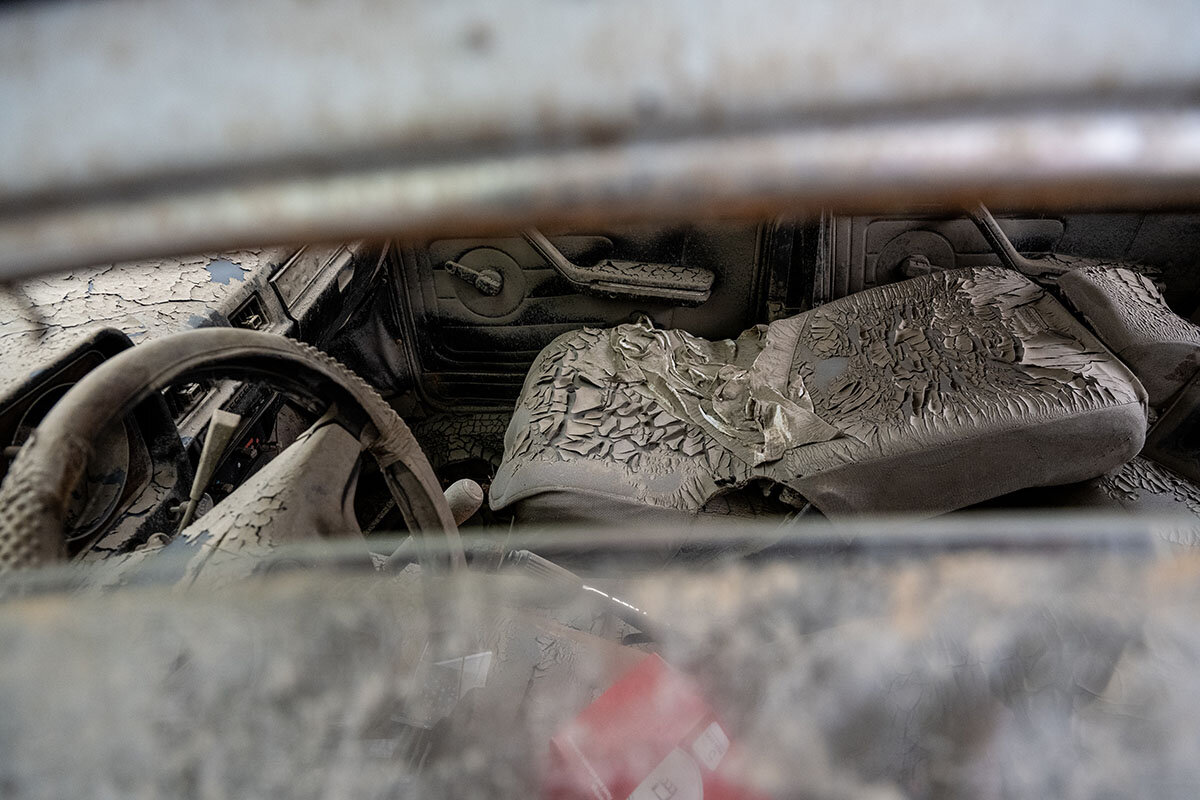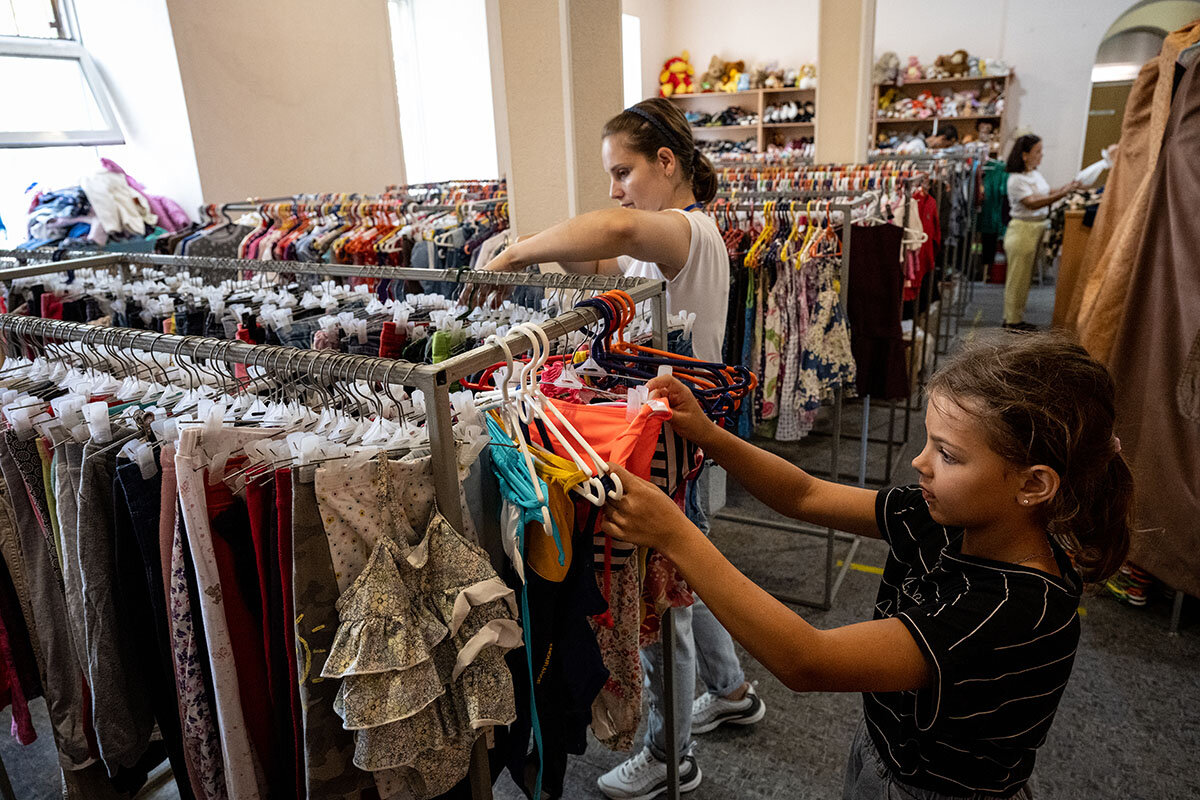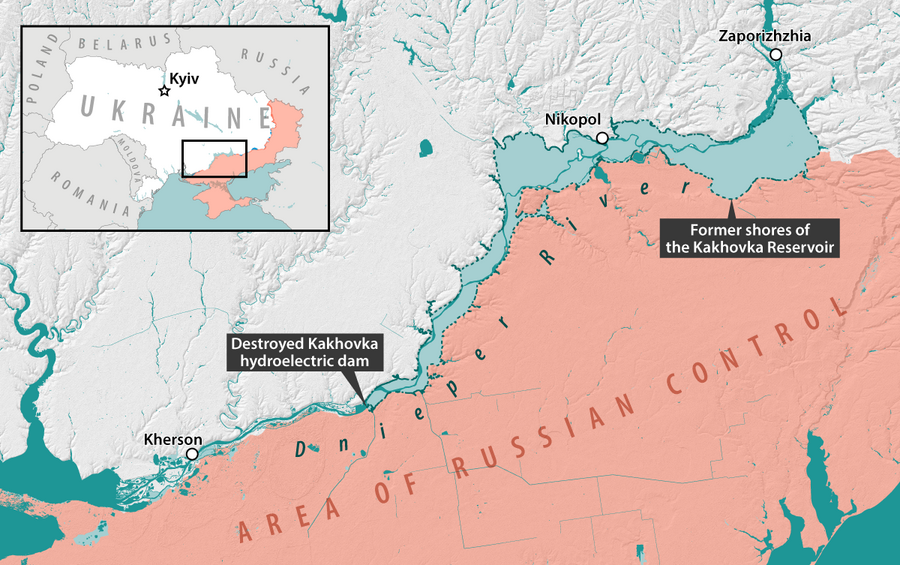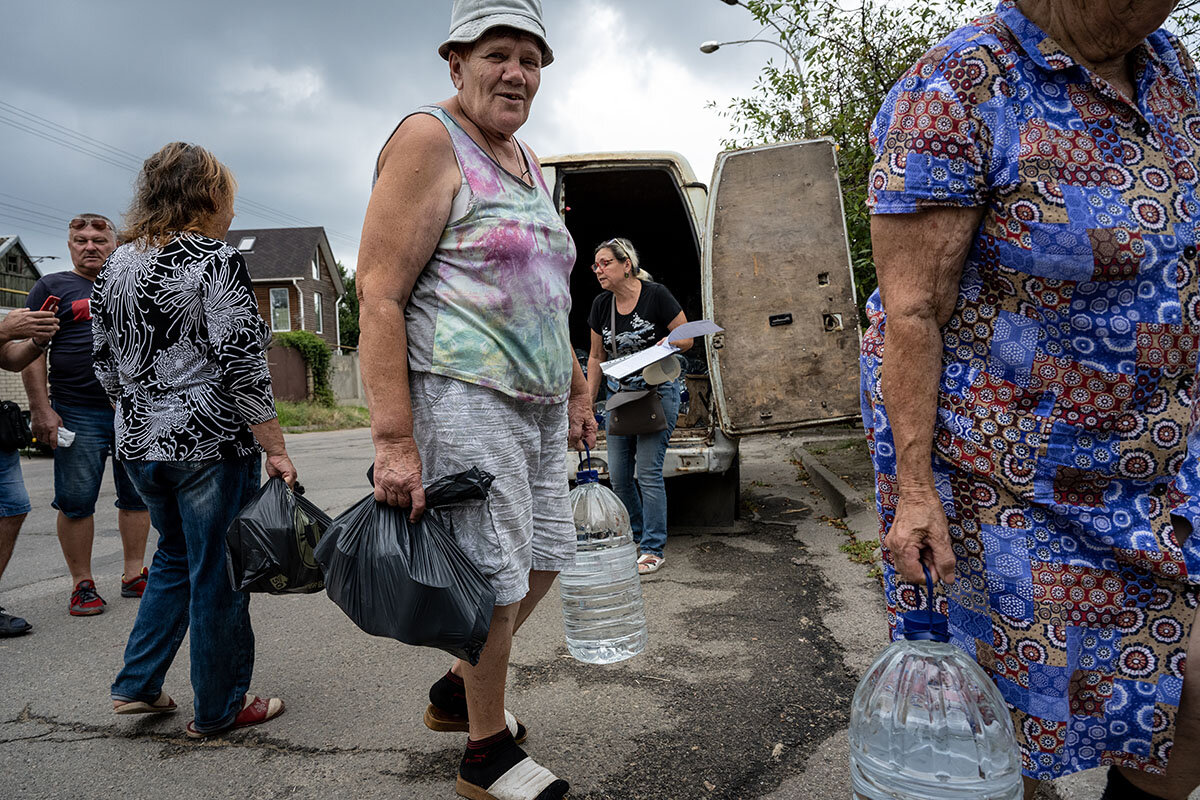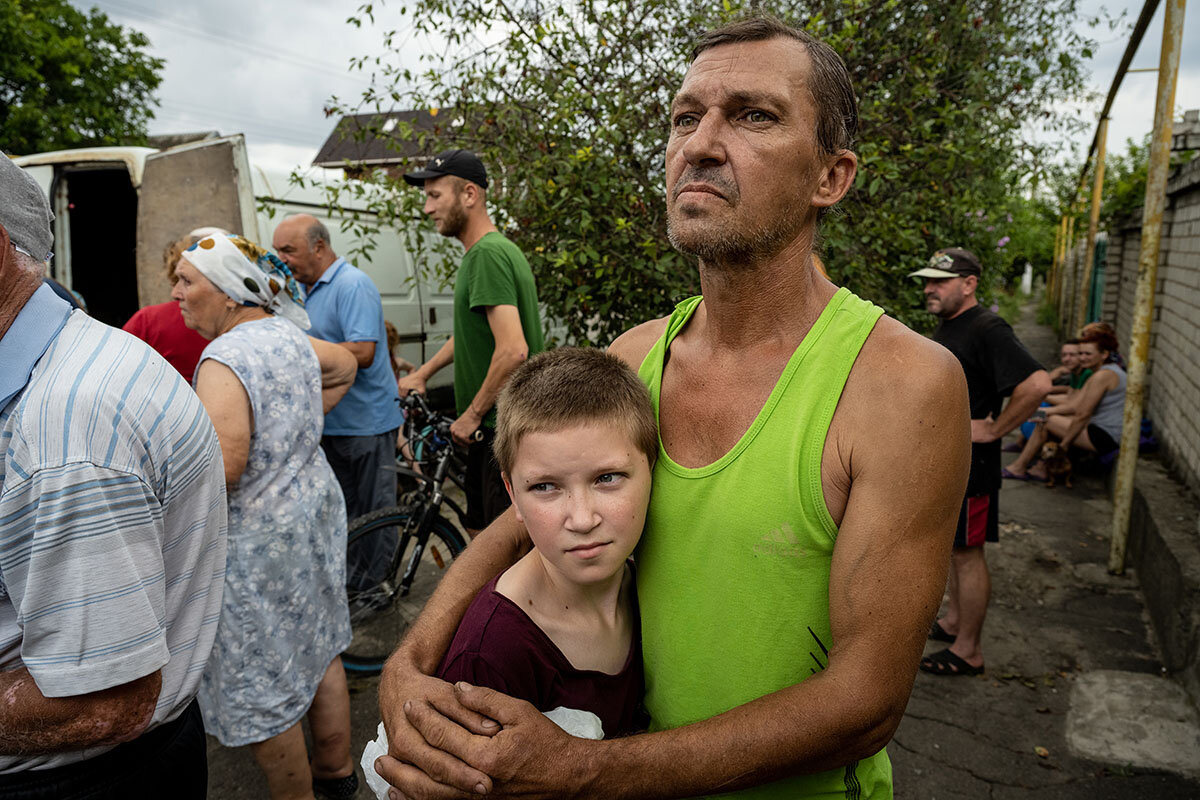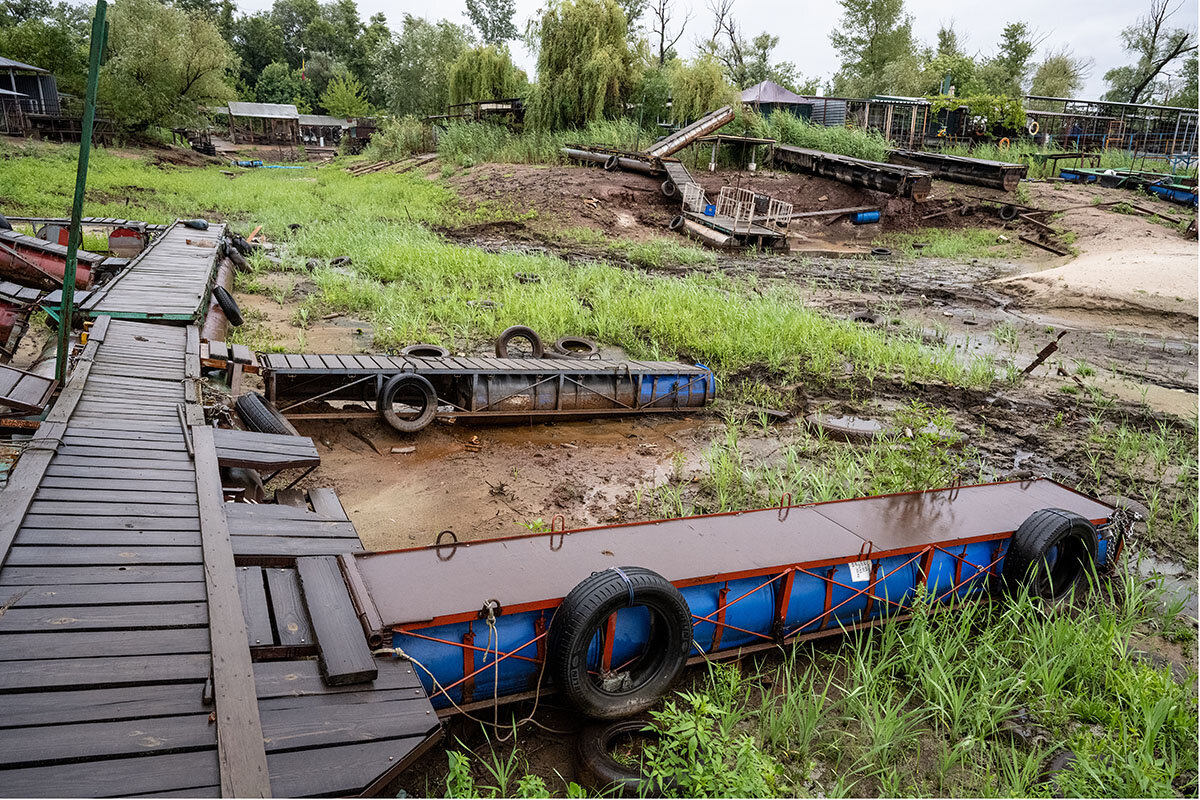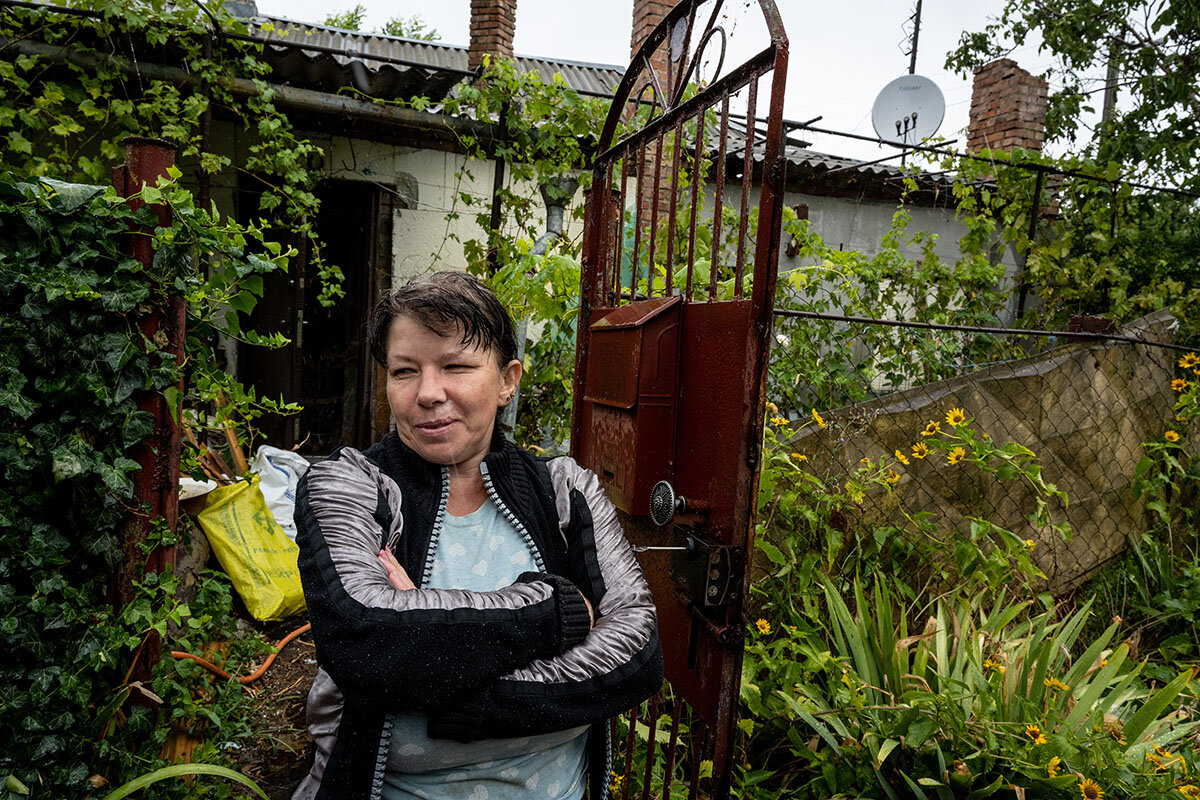Mud and thirst: Two Ukraine cities cope with dam’s destruction
Loading...
| Kherson and Nikopol, Ukraine
The early June blast at a hydroelectric dam in southeastern Ukraine – detected by seismic sensors in Europe – unleashed some 4 cubic miles of water. The resulting torrent deposited industrial pollutants in flooded homes, agricultural lands, and environmentally delicate estuaries.
Within days, the United Nations warned of “severe, long-term impacts” that are likely to “cast a dark shadow over the country for decades.” But in the short term, regional residents’ biggest challenges are twofold: a massive cleanup and a severe shortage of drinking water.
Why We Wrote This
A story focused onThe destruction wrought by the June explosion of a dam in southeast Ukraine is both vast and long-lasting. Residents of two cities more than 100 miles apart are deploying different coping mechanisms to endure an event that has transformed their lives.
Parts of Kherson and scores of farming villages on both sides of the Dnieper River are still coping with the surge of water that for a time submerged them. But other cities like Nikopol, 75 miles upstream from the dam, have endured severe water shortages as the reservoir drained and Russia targeted pumping stations.
Residents are already thinking of the coming winter. Vadym Danyk, co-founder of Lighthouse of Revival, a local charity that organizes cleanup teams and distributes essentials in Kherson and remote villages, says many homes remain uninhabitable.
“Everybody understands what that means,” he says. “Some people have only their walls. Some people have nothing. Those with walls don’t know how they will live in winter – people forget about this very fast.”
Her hands crusty with dried mud, Ukrainian Vira Rozhko pauses from the Sisyphean effort of cleaning her flooded home to leaf through a family photo album.
Water has destroyed many of the images, though some still show scenes of joyful, long-gone memories.
“At least I saved something,” says Ms. Rozhko, her voice drained of emotion, as she stands in the ruins of the house her parents built in a low-lying district of Kherson.
Why We Wrote This
A story focused onThe destruction wrought by the June explosion of a dam in southeast Ukraine is both vast and long-lasting. Residents of two cities more than 100 miles apart are deploying different coping mechanisms to endure an event that has transformed their lives.
Inside, the air is still infused with the fetid stink of damp and rot after a cleaning team from the local Ukrainian charity Lighthouse of Revival shoveled most of the mud from the floors and hacked away the waterlogged lower half of each wall.
What remains are a few mud-smeared personal possessions and plenty of anti-Russia anger that is shared in the region, which flooded when Russian forces are believed to have blown up the Kakhovka hydroelectric dam, 40 miles upstream.
The early June blast in southeastern Ukraine – detected by seismic sensors in Europe – unleashed some four cubic miles of water. On top of the destruction, the resulting torrent swept up industrial pollutants and deposited them in flooded homes, agricultural lands, and environmentally delicate estuaries close to the Black Sea.
Within days, the United Nations warned of “severe, long-term impacts” that are likely to “cast a dark shadow over the country for decades.”
But in the short term, regional residents’ biggest challenges are twofold: a massive cleanup and a severe shortage of drinking water.
Too much or too little
Parts of Kherson and scores of farming villages on both sides of the Dnieper River are still coping with the surge of water that for a time submerged them. But other cities like Nikopol – a pipe- and steel-producing town 75 miles upstream from the dam, on the shore of the former Kakhovka Reservoir – have endured severe water shortages for 1 1/2 months, as the reservoir drained and Russia targeted pumping stations.
Though 115 miles apart, both cities remain on the riverine front line, under frequent Russian bombardment. Yet each area’s residents have had to deploy different coping mechanisms to get through an event that transformed their lives – either too much water, or too little – even as global attention to the dam crisis dissipates.
“You can see what our ‘favorite liberators,’ the Russians, brought to us,” says Ms. Rozhko, referring pithily to Moscow’s false justification for its February 2022 invasion of Ukraine, to “liberate” Ukrainians from Nazis. “How many people and children have died? We never thought this could be happening.”
The flooding is a second shock of the war for the southern city of Kherson, which was occupied by Russian forces for eight months last year, until November. Near-daily bombardment continues from Russian positions across the river, including at least 17 reports of shelling in the region Sunday that left seven people dead.
“When the Russians left, we celebrated because the house was not damaged,” recalls Ms. Rozhko. “Then this [flooding] happened. ... Most neighbors suffered the same thing; now they have nowhere to go,” she says, of those who can’t rebuild.
“My house is at least standing – although it has no walls,” she says. “All the furniture is gone. Only holes are left.”
Fixing those windows and roofs and caring for residents across the Kherson region is Lighthouse of Revival, which organizes cleanup teams and runs regular distribution of essentials to residents of the city and remote villages targeted by Russian shelling.
The aid group hands out food and water, hygiene kits and kitchen sets, and mattresses and clothing. It started work in Kherson soon after the Russian invasion, but suspended activities during the occupation when volunteers began getting kidnapped.
Early eye to winter
Vadym Danyk, co-founder of Lighthouse of Revival, says Kherson residents now face two challenges: faltering interest from foreign donors, as the flood falls from the headlines; and the fact that so many homes remain uninhabitable, with winter not that far off.
“Everybody understands what that means,” says Mr. Danyk. “Some people have only their walls. Some people have nothing. Those with walls don’t know how they will live in winter – people forget about this very fast.”
More than 50 people volunteer for the charity, and donors have so far provided sufficient food and humanitarian supplies. But the volunteers pay for their own fuel, and the need is vast – especially in remote villages.
Most relief agencies are “too afraid to deliver aid to forest villages, because the shelling is constant,” says Mr. Danyk.
The villages “don’t have civilization at all: no water, no electricity,” he says. His volunteers provide generators for use in wells, to pump water, as well as jerry cans and basic medicines.
“We are just making temporary repairs,” Mr. Danyk says of efforts to seal open windows and patch wrecked roofs. “Permanent repairs are useless work, because of all the bombing and shelling. At least we can save the buildings, but not to live in for winter.”
Even getting to winter is a challenge for some Kherson residents, in a city where Lighthouse of Revival, for example, has ensured that no more than 50 people gather at distribution points at one time, because the cluster of cell phone signals can trigger Russian shelling.
“It is literally Russian roulette,” says Mr. Danyk.
At one such mobile distribution point, residents were lining up recently for bottles of water and food packets to last each family for a week.
“The shelling is constant – it’s really coming every night,” says Oleksandr Ustenko, wrapping his arms around his son, Stanislav, while waiting for a water ration. “We just sleep and cover our son; it’s all we can do to protect ourselves.”
He says aid levels have dropped by half since the peak of the crisis. When asked if the distributions are “critical” to his family’s survival, he is unequivocal: “Yes.”
From sea to desert
The situation is different but no less dire far upstream in Nikopol, where the shoreline disappeared as the reservoir emptied in June, and officials were forced to truck in supplies of water, with support from across the country. Non-potable water finally began flowing in city pipes again in late July.
“This was a sea, but now it is a desert,” says Alla Syrotenko, the deputy head of Nikopol’s military administration, as she walks toward an overlook in the city’s Old Town, which is frequently targeted.
Where water once was, there is now a sandy reservoir bottom. Rising up five miles to the southeast are the towers of the Zaporizhzhia nuclear power plant, which Russia controls.
The plunging water levels will affect lives for decades, officials estimate; boats and barges alike are stuck in mud, along the Dnieper River and its tributaries. It took the Soviet Union six years to complete the colossal dam project in the early 1950s, which provided electricity and water for irrigation for much of the southern region.
“This was very scary, honestly,” says Olena Deynega, whose view of a busy marina now is of no more than docks settled into silt and a padlocked gate. She just changed the door of her house, which was damaged by two recent shell blasts.
“The children used to come and swim. Now there are a lot of dead fish, so there are flies in the house,” she says. “We used to go to the dam and hear the sound of seagulls. It’s all gone now.”
City workers set up 41 distribution points for water for bathing and laundry and 17 points for drinking water for 200,000 people in the Nikopol district, says Ivan Basyliuk, head of the Nikopol City Council. With the help of Unicef, some 20,000 to 22,000 liters (5,300 to 5,800 gallons) of bottled water were supplied each day.
One government project already underway aims to restore the estuary by pumping water from the upstream city of Zaporizhzhia. There are also plans to rebuild the dam, though on a scale more suited to Ukraine’s modern needs – not the mammoth Soviet-era requirements of the original project.
“If this happens, we will have this sea again,” says Mr. Basyliuk.
Tabulating losses
As the region looks forward to recovering its prewar environment and way of life, the loss of estuaries is one issue. Vast numbers of trees have also been destroyed.
Helping to tabulate an eventual reparations claim against Russia is Olha Musatkina, the head of Nikopol’s Department of Ecology, whose ability to thoroughly assess the environmental costs is still constrained by the war and safety issues.
Drinking water was still available as the reservoir emptied, says Ms. Musatkina, so Russia kept targeting the pumping station until it stopped.
“Your day started with the question: How do I get water? It was like a quest,” recalls Ms. Musatkina.
“Those who fixed the pumps, under shelling and at night – these people are heroes. ... It shows we are strong, and won’t give up.”
Oleksandr Naselenko supported reporting for this story.






